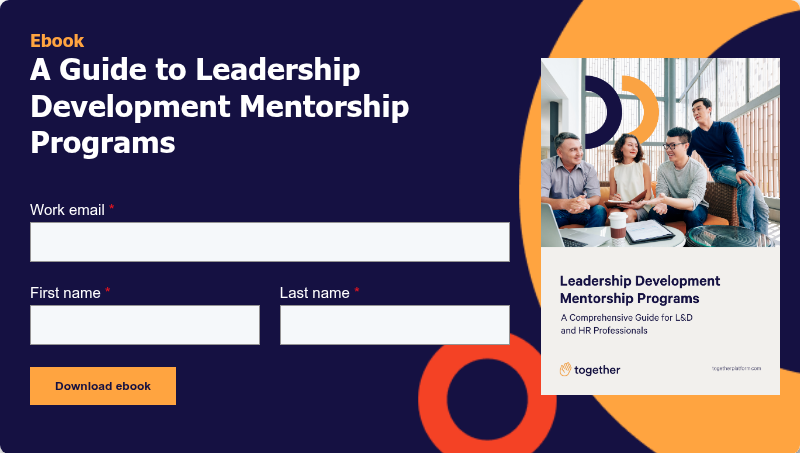The business landscape is evolving at an unprecedented pace. Digital transformation, remote work models, artificial intelligence, and shifting workforce expectations are reshaping how organizations operate. In this dynamic environment, traditional leadership approaches often fall short. Organizations need future ready leadership that can navigate uncertainty, inspire teams through change, and drive sustainable growth.
But what exactly defines future-ready leadership, and how can organizations systematically cultivate these essential capabilities? This comprehensive guide explores the key strategies for developing leaders who can thrive in tomorrow's workplace.
Understanding future ready leadership
Future ready leadership goes beyond conventional management skills. It encompasses the ability to anticipate change, adapt quickly to new circumstances, and guide organizations through complex challenges while maintaining team engagement and performance. These leaders don't just react to change—they proactively shape their organization's future.
Future-ready leaders possess a unique combination of emotional intelligence, strategic thinking, technological literacy, and cultural awareness. They understand that leadership in the modern era requires both human-centered skills and digital fluency, creating a bridge between traditional leadership wisdom and contemporary workplace realities.
Essential future ready leadership skills
1. Adaptive thinking and resilience
The foundation of future ready leadership skills lies in cognitive flexibility. Leaders must be comfortable with ambiguity and capable of pivoting strategies when circumstances change. This requires developing a growth mindset that views challenges as opportunities rather than obstacles.
Resilient leaders maintain composure during crises while helping their teams process change constructively. They model emotional regulation and demonstrate that setbacks are temporary learning experiences rather than permanent failures.
2. Digital fluency and innovation mindset
Tomorrow's leaders must understand how technology impacts their industry and organization. This doesn't mean becoming technical experts, but rather developing the ability to evaluate digital solutions, understand their implications, and guide teams through technological transitions.
An innovation mindset involves encouraging experimentation, celebrating intelligent failures, and creating environments where creative problem-solving flourishes. Future-ready leaders foster cultures of continuous learning and improvement.
3. Inclusive and collaborative leadership
Modern organizations are increasingly diverse and distributed. Future proof leadership requires the ability to lead across cultures, generations, and geographic boundaries. This involves developing cultural intelligence, understanding different communication styles, and creating inclusive environments where all team members can contribute their best work.
Collaborative leadership means breaking down silos, facilitating cross-functional cooperation, and recognizing that the best solutions often emerge from diverse perspectives working together.
4. Data-driven decision making
Future-ready leaders balance intuition with analytics. They understand how to interpret data, identify meaningful patterns, and make informed decisions based on evidence rather than assumptions. This skill becomes increasingly critical as organizations generate more data and stakeholders expect transparency in decision-making processes.
5. Purpose-driven communication
Modern employees, especially younger generations, seek meaning in their work. Future-ready leaders excel at connecting individual roles to broader organizational purpose and societal impact. They communicate vision effectively and help team members understand how their contributions matter.
Strategic approaches to cultivating future ready leadership
1. Implement comprehensive leadership development programs
Creating a future ready leadership program requires intentional design and sustained commitment. Effective programs combine multiple learning modalities, including formal training, experiential learning, and peer collaboration.
Start by assessing your organization's current leadership capabilities and identifying specific skills gaps. Design curricula that address both immediate needs and long-term strategic objectives. Include modules on emerging technologies, change management, cross-cultural communication, and ethical decision-making.
Future leaders programs should be ongoing rather than one-time events. Create learning pathways that allow leaders to progress through different stages of development, from emerging leaders to senior executives.
2. Leverage mentorship for leadership development
Mentorship represents one of the most powerful tools for cultivating future-ready leadership. Through structured mentorship relationships, emerging leaders gain access to experienced perspectives, develop critical thinking skills, and build professional networks that support their growth.
Effective leadership mentorship programs create structured frameworks for knowledge transfer while allowing for personalized development paths. Senior leaders share not only technical knowledge but also insights about navigating organizational politics, managing stakeholder relationships, and making difficult decisions under pressure.
The key to successful mentorship lies in choosing and preparing the right mentors who can provide both challenge and support. Mentors should possess the future-ready skills you're trying to develop and demonstrate commitment to developing others.
When implementing mentorship programs, focus on setting mentees up for success by providing clear objectives, structured processes, and ongoing support. This ensures that mentorship relationships deliver tangible development outcomes rather than becoming informal conversations without direction.
3. Create stretch assignments and cross-functional projects
Future-ready leaders need opportunities to practice their skills in real-world situations. Design stretch assignments that push emerging leaders beyond their comfort zones while providing appropriate support and guidance.
Cross-functional projects expose future leaders to different parts of the organization, helping them develop systems thinking and collaborative skills. These experiences also build internal networks that prove valuable throughout their careers.
4. Foster a culture of continuous learning
Organizations must model the learning behaviors they want to see in their leaders. Create environments where curiosity is rewarded, questions are encouraged, and professional development is prioritized.
Provide access to diverse learning resources, including online courses, industry conferences, peer learning groups, and external coaching. Encourage leaders to pursue certifications and advanced education that align with organizational needs and personal interests.
5. Implement regular feedback and coaching
Future-ready leadership development requires ongoing feedback and course correction. Implement 360-degree feedback processes that provide leaders with comprehensive perspectives on their performance and development needs.
Combine formal performance reviews with regular coaching conversations that focus on growth and development rather than just performance evaluation. Help leaders identify their strengths and development opportunities while creating actionable plans for improvement.
6. Emphasize emotional intelligence development
Technical skills can be taught relatively quickly, but emotional intelligence requires sustained development and practice. Provide training on self-awareness, empathy, social skills, and emotional regulation.
Create opportunities for leaders to practice these skills through team-building exercises, conflict resolution scenarios, and community involvement. Help them understand that emotional intelligence becomes increasingly important as they advance in their careers.
7. Promote innovation and experimentation
Encourage leaders to pilot new approaches, test innovative solutions, and learn from both successes and failures. Create innovation labs, hackathons, or pilot programs that allow leaders to experiment with new ideas in low-risk environments.
Recognize and celebrate intelligent risk-taking, even when experiments don't succeed. This builds the courage and creativity that future-ready leaders need to navigate uncertain environments.
Measuring success in leadership development
Effective future ready leadership programs require robust measurement and evaluation. Establish clear metrics that track both individual development and organizational impact. Consider measuring:
- Leadership competency assessments before and after development interventions
- Employee engagement scores for teams led by program participants
- Retention rates among high-potential leaders
- Innovation metrics and successful change initiatives
- 360-degree feedback improvements over time
- Career advancement rates for program graduates
Regular evaluation allows you to refine your approach and ensure that development investments deliver meaningful returns. Measuring the impact of leadership mentorship programs provides specific frameworks for tracking mentorship effectiveness.
Common challenges and how to overcome them
1. Resistance to change
Some leaders may resist new approaches or feel threatened by evolving expectations. Address this through clear communication about the rationale for change, involvement in program design, and recognition of existing strengths while building new capabilities.
2. Resource constraints
Leadership development requires investment in time, money, and organizational attention. Build a compelling business case that demonstrates ROI and start with pilot programs that prove value before scaling.
3. Inconsistent implementation
Ensure that all levels of leadership are aligned on development priorities and approaches. Create accountability mechanisms and regular check-ins to maintain momentum.
4. Lack of real-world application
Bridge the gap between learning and application by providing immediate opportunities to practice new skills. Connect development activities to current business challenges and projects.
The role of technology in leadership development
Modern leadership development increasingly leverages technology to enhance learning experiences and track progress. Consider incorporating:
- Virtual reality simulations for leadership scenarios
- AI-powered coaching and feedback tools
- Mobile learning platforms for just-in-time skill development
- Data analytics to personalize development paths
- Online collaboration tools for peer learning networks
Technology should enhance rather than replace human connection and mentorship, which remain central to effective leadership development.
Creating a sustainable leadership pipeline
Cultivating future ready leadership is not a one-time initiative but an ongoing organizational commitment. It requires systematic approaches, sustained investment, and cultural alignment around the importance of leadership development.
Organizations that succeed in developing future-ready leaders create competitive advantages that extend far beyond individual performance. These leaders drive innovation, navigate change effectively, and build resilient teams that can thrive in any environment.
The investment in leadership development pays dividends through improved employee engagement, better business results, and organizational agility that enables success in rapidly changing markets. Most importantly, future-ready leaders create environments where others can grow and develop, multiplying the impact of your development investments.
Start by assessing your current leadership capabilities, identifying development priorities, and designing comprehensive programs that address both immediate needs and long-term strategic objectives. Remember that the best time to develop future-ready leaders is before you need them.
Ready to transform your leadership development?
Developing future-ready leaders requires strategic planning, proven methodologies, and ongoing commitment. Mentorship programs represent one of the most effective approaches for accelerating leadership development while building organizational culture and knowledge retention.
Download our comprehensive Leadership Development Mentorship Programs eBook to discover step-by-step frameworks for designing, implementing, and measuring successful mentorship initiatives. This practical guide includes templates, best practices, and real-world examples that will help you create mentorship programs that develop the future-ready leaders your organization needs.
Transform your leadership development approach and build the leadership pipeline that will drive your organization's future success. Download the eBook today and start cultivating tomorrow's leaders.



.svg)







.svg)

